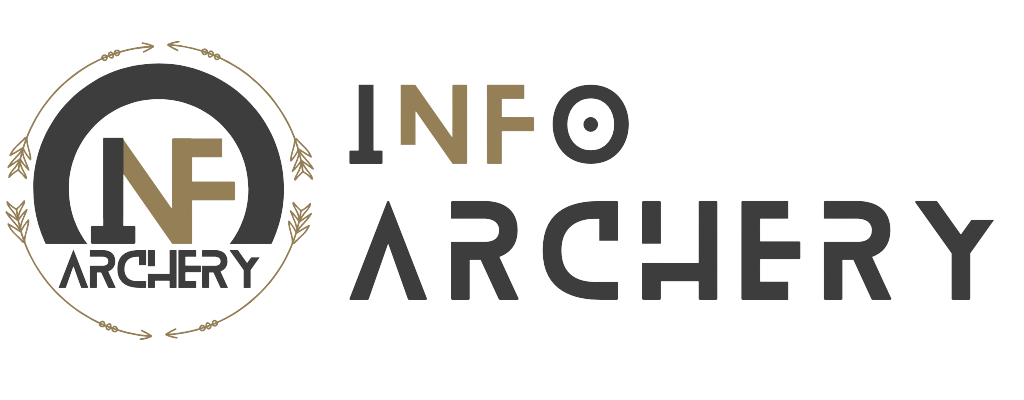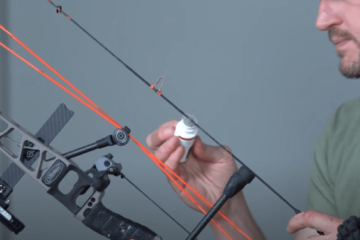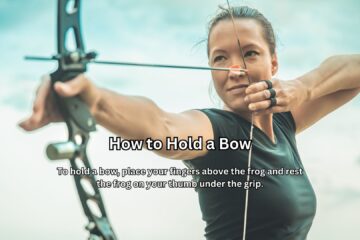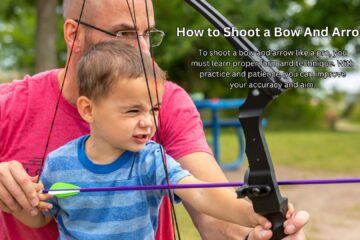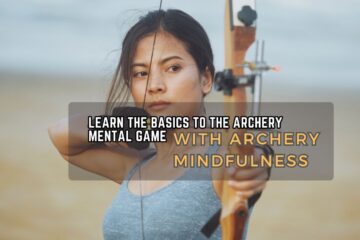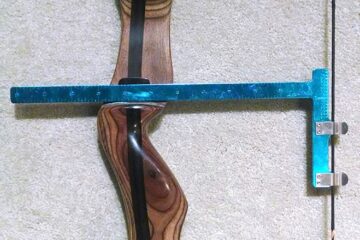The main parts of a bow include the grip, riser, limbs, bowstring, and arrow rest. The grip is the part where the archer holds the bow, while the riser is the central part of the bow where all the components attach.
A bow is a weapon that has been used in hunting and warfare for thousands of years. It is a simple tool, yet highly effective. A bow consists of several parts, each with its unique function. The grip is where the archer holds the bow, while the riser is the central part of the bow where all the components attach.
The limbs are the upper and lower parts of the bow that bend when the bowstring is pulled back. The bowstring is the string that connects the limbs and is used to launch the arrow. Lastly, the arrow rest is the part of the bow that supports the arrow, ensuring it flies straight and true. Understanding these parts can help archers choose the right bow for their needs and enhance their performance.
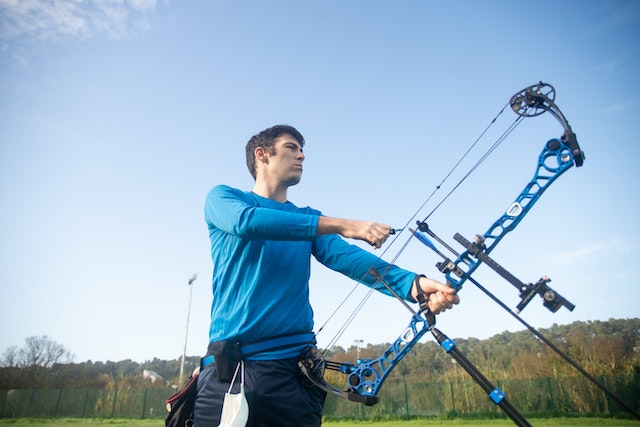
Credit: archerydude.com
Understanding The Anatomy Of A Bow
Explanation Of Different Types Of Bows (Recurve, Compound, Longbow, Etc.)
If you’re an archery enthusiast, you know that there isn’t just one type of bow. Each type has unique features that cater to a specific archery style or preference. Here’s a brief overview of the most common types of bow:
- Recurve bow: The popular choice among beginners and experts, this bow’s limbs curve outward from the archer, producing higher speed and accuracy.
- Compound bow: This bow uses a pulley system to reduce the weight at full draw and retains the energy longer, thereby increasing accuracy and speed.
- Longbow: The oldest and simplest of all the bows, this one has a long and straight design, giving archers a greater sense of tradition.
- Crossbow: With a short draw length and a horizontal bow setup, this bow is unique in how it’s held and fired, much like a rifle. It’s often used for hunting.
Main Components Of The Bow (Limbs, Riser, Grip, String, Etc.)
The bow is made up of several key components, each of which contributes to the bow’s overall performance:
- Riser: The central part of the bow where the limbs attach. It’s the heaviest part of the bow and typically made from a heavy metal like aluminum.
- Limbs: The bow’s most critical components are the two flexible arms that store and transfer energy to the arrow.
- String: The most crucial part of the bow, it connects the tips of the limbs and provides the force that propels the arrow.
- Grip: The part of the bow where the archer holds it. It’s usually made of wood or rubber material and designed to provide comfort and precision.
- Sight: This optional add-on is used to align the bow for greater accuracy in target shooting and can be integrated into the riser.
Importance Of Each Component And How They Work Together To Create The Bow’S Performance
Each component of the bow is crucial, and though they may seem distinct, they work together to create a cohesive, high-performance weapon.
- Riser: The riser is the bow’s foundation and shapes its overall balance and weight. It must be made of sturdy material to withstand the bow’s pulling force. A heavier riser provides greater stability, whereas lighter ones are more comfortable for longer periods of shooting.
- Limbs: The limbs of the bow are its main source of power. They function by bending when the bowstring is drawn, storing potential energy that is released when the archer releases the arrow. The shape and quality of the limbs significantly affect the bow’s accuracy, speed, and power. The more molded or curved the limbs are, the more energy and speed they can provide.
- String: The bowstring transfers the stored energy of the limbs to the arrow. The bowstring’s quality affects the bow’s release and accuracy, making it one of the most crucial components of the bow.
- Grip: The grip is the archer’s primary point of contact with the bow, and its design significantly affects the accuracy, comfort, and stability of the shot. A good grip provides a balanced feel in your hand, reduces torque or twisting, and makes it easier to hold an aim.
- Sight: This optional add-on helps archers to aim more accurately and safely. It can be adjusted and calibrated to suit different targets and distances. By improving aim, the sight contributes to the overall performance and success of the archer.
By choosing the right components and maintaining them properly, archers can optimize their bow’s performance and shoot with greater precision and accuracy.
Limbs
Overview Of Limb Construction And Types
The limbs of a bow are the flexible parts that store and release energy when you shoot. They are critical in determining a bow’s performance, speed, and noise. Here are the key points to remember about limb construction and types:
- Limbs can be constructed in different ways, such as laminated or one-piece types. Laminated limbs have several layers of material, usually fiberglass or carbon, that are glued together. One-piece limbs are made from a single piece of material.
- The material used in limb construction can also vary, such as wood, fiberglass, carbon fiber, or a combination of them. Each material has its own set of advantages and disadvantages.
- The shape and design of the limb play a big role in how much energy it can store and release. Some common limb shapes include flat, tapered, or recurved.
Function Of Limbs In Bow Performance
The limbs’ main function in a bow is to store potential energy when you pull back on the bowstring and then release that energy to propel the arrow forward. The amount of energy stored and released by the limbs is dependent on factors such as limb length, stiffness, and shape.
Here are some key points to keep in mind about the function of limbs:
- Limbs with a higher stiffness will store more energy and produce faster arrow speeds but may also be harder to pull back.
- Longer limbs generally store more energy and produce faster arrow speeds than shorter limbs.
- The shape of the limb affects the amount of energy stored and released. Recurved limbs, for example, are designed to store more energy than flat limbs.
Different Types Of Limb Tips
The limb tips are the part of the bow where the bowstring attaches. There are different types of limb tips with varying designs and materials used in construction. Here are some things to keep in mind about limb tips:
- Reinforced limb tips are designed to withstand the pressure of the bowstring and prevent them from splitting or breaking under stress.
- Non-reinforced limb tips are typically made from lighter materials and are suitable for lightweight bows or beginner archers.
- Some limb tips are designed to be compatible with specific types of bowstrings or attachment methods.
Bowstring Attachment Methods
There are different types of methods used to attach the bowstring to the limbs of a bow. The method chosen may depend on various factors, such as personal preference, bow design, and bowstring material. Here are some key points to keep in mind:
- Bolt-on attachment is a common method used for traditional bows, where the limb tips have a threaded hole for attaching bowstrings.
- Ilf (international limb fitting) attachment is a standard used for modern recurve and olympic-style bows. This system uses a separate riser and interchangeable limbs that can be easily attached and detached.
- There are other bowstring attachment methods, such as dacron and flemish twist, which are compatible with specific types of bows or bowstrings.
Riser
Parts Of A Bow: A Comprehensive Guide For Archery Enthusiasts
If you’re an archer, you know that your bow consists of several parts, each with its own purpose. One of the most crucial components of the bow is the riser. In this guide, we’ll explain the different aspects of riser design and materials, its purpose, and how to choose the right riser for your bow.
Description Of Riser Design And Materials
The riser is the central part of your bow and connects the upper and lower limbs. The design and materials of the riser affect the bow’s performance, weight, and feel. Some popular materials used for risers include wood, aluminum, and carbon fiber.
- Wood: Wooden risers are traditional and aesthetically pleasing. They’re often made from exotic woods and give off a warm vibe. However, they’re not as durable as modern materials and can crack or warp over time.
- Aluminum: Aluminum risers are sturdy and lightweight, making them ideal for modern archery. They’re also rust-resistant and require less maintenance compared to wood.
- Carbon fiber: Carbon fiber risers are relatively new to the market. They’re lightweight, strong, and have excellent vibration damping properties. However, they can be expensive compared to other materials.
Purpose Of Riser
The primary purpose of the riser is to hold and stabilize the bow limbs, but it also serves other functions.
- It connects the limbs: The riser’s location and connection points for the bow limbs have a significant effect on the bow’s overall stability.
- Provides a grip for the archer: The riser’s shape and design determine the archer’s grip and how comfortable it is.
- Allows for accessory attachments: The riser often features mounting points for accessories such as sights, stabilizers, and quivers.
How To Choose The Right Riser For Your Bow
Choosing the right riser for your bow is essential to ensure optimal performance and comfort.
- Consider your hand size: The grip should feel comfortable and secure in your hand. If you have a larger hand, choose a larger riser, and a smaller riser if you have smaller hands.
- Determine your archery style: Different archery styles require different riser designs. For example, olympic archery often uses longer risers than traditional archery.
- Determine your skill level: Beginners may find it challenging to handle lighter materials such as carbon fiber until they gain more skills and experience.
- Consider your budget: The riser’s cost varies depending on materials and design. Determine your budget and choose the best quality riser within your budget.
How Riser Affects Overall Bow Weight And Balance
The weight and balance of your bow is critical for accuracy and performance. The riser plays a significant role in determining this.
- Lightweight risers: Carbon fiber risers, and some aluminum risers, are lightweight. They reduce the overall bow weight and make it easier to carry, but too lightweight risers can make it challenging to stabilize the bow.
- Heavyweight risers: Wooden risers are usually heavier and can help balance the bow better. However, too heavy risers can be cumbersome to hold for long periods.
The riser is a vital component of a bow, and choosing the right one can significantly impact your archery experience. Consider the design, materials, purpose, your hand size, archery style, and skill level before making a purchase.
Bowstring, Cables, And Arrows
As an archery enthusiast, understanding the anatomy of your bow is critical to your sport’s success. Among the vital components of this weapon are the bowstring, cables, and arrows.
Different Types Of Bowstrings
The bowstring is the most important part of the bow, as it is the link between the bow and arrows. Different materials are used to manufacture bowstrings, including bcy dyneema, fast flight, and b-50.
- Bcy dyneema: Made from a high molecular weight polyethylene material, are considered the most durable of all bowstrings.
- Fast flight: A popular choice among archers due to its high speed and accuracy while maintaining a low stretch rate.
- B-50: An older string type made of polyester; they are not as fast as modern bowstrings. However, they are still reliable, durable and affordable.
Functions Of Bowstring And Cable
The bowstring and cable work together to propel an arrow from the bow. The bowstring attaches to the bow’s limbs’ tips along with the cable, which forms a loop around the cam. The following are the essential functions of bowstrings and cables:
- Transfer kinetic energy from the bow to the arrow through the limbs and cams.
- Stabilize the bow’s upper and lower limbs to keep them in place during shots.
- Launch the arrow with accuracy and consistency.
Overview Of Arrow Components
An arrow has several components that affect its speed and accuracy, including shafts, nocks, vanes/fletchings, and points/broadheads.
- Shafts: The backbone of the arrow, producing most of the arrow’s weight and stiffness.
- Nocks: The small plastic piece that attaches the arrow to the bowstring.
- Vanes/fletchings: The wings on the back of the arrow that guide it in flight.
- Points/broadheads: The arrowhead’s tip, which is vital for accuracy and penetration.
How Arrow Length And Weight Impact Bow Performance
Arrow length and weight considerably affect the bow’s performance, as different bows have different specifications. Here’s how:
- Arrow length: Longer arrows require more energy to launch, resulting in less speed and accuracy; shorter arrows are faster and more accurate.
- Arrow weight: A heavier arrow transmits more force to the bow and requires more energy to release, resulting in slower arrow speed, while a lighter arrow results in faster and more accurate shooting.
An archery enthusiast should understand the different components of the bow, including bowstrings, cables, and arrows. By doing so, they can make informed decisions on the arrow’s weight and length based on the bow’s specifications, resulting in high-performance archery.
Accessory Components
Various Bow Accessories And Their Functions
Bow accessories are additional components that can help improve your shots by increasing your accuracy, stability and overall shooting experience. Half of the fun of owning a bow is experimenting with different accessories to see what works best for you.
Some of the most common accessories include:
- A sight: This is an adjustable vertical bar that helps archers aim their shot by featuring pins, dots or scopes. A sight is a must-have accessory for archers who want to precision their accuracy.
- An arrow rest: An arrow rest is a small shelf that supports the arrow as the shooter pulls back and releases the arrow. Most rests use bristles or other materials to prevent the arrow from bouncing or falling off the shelf.
- Stabilizers: A stabilizer helps balance and improve a bow’s overall stability during the shot. Usually, they are mounted to the front of the riser to counterweight the bow and to absorb the shock of the bowstring.
- Quivers: A quiver is an accessory that holds the arrows on the bow while not in use, making it easy to carry them wherever you go. It is important to choose a quiver that is compatible with your bow’s type of arrows.
How Accessories Affect Bow Weight, Balance, And Performance
Adding accessories to a bow can affect its weight, balance, and performance. Here are some ways that accessories can affect your bow:
- Weight: Every accessory that you add to your bow increases its overall weight. This extra weight could make the bow more challenging to handle unless you adjust your shooting techniques.
- Balance: The balance point of the bow can change depending on the accessories attached to it. This can also change the bow’s draw weight, which could modify the amount of force needed to draw the bow back fully, affecting the accuracy of the shot.
- Performance: Accessories can have a significant impact on the bow’s performance. The right accessory can improve your accuracy, provide better stability, and reduce noise and vibration during the shot.
Tips On Choosing The Right Accessories For Your Needs
Choosing the right accessories for your bow could be a daunting process with so many options to choose from. Here are some factors to keep in mind when selecting accessories for your bow:
- Determine your needs: Before choosing an accessory, consider what you hope to gain from it? Do you want better accuracy, stability, or both? Think about your objectives and choose accessories accordingly.
- Compatibility: Make sure that the accessory is compatible with your bow, including the brand, model, and type of arrow.
- Quality: Go for the highest quality accessories that will fit your budget. Better quality accessories are more durable, perform better, and last longer.
- Seek advice: Always consult with specialists and experts in the archery industry to help you choose the right accessories for your bow. They can assist you in selecting the perfect product that suits your needs and abilities.
The right bow accessories can enhance your shooting experience and improve your accuracy, stability, and performance. Choose your accessories based on compatibility, quality, and personal preferences. Remember to seek advice from experts in the field of archery to help you make the best possible decisions.
Frequently Asked Questions On Parts Of A Bow
What Are The Parts Of A Bow?
The main parts of a bow include the grip, riser, limbs, string, bowstring nocks, and arrow rest. Each part works together to create a functional and effective bow.
What Is The Role Of The Bowstring Nocks?
Bowstring nocks are small grooves in the upper and lower limbs where the bowstring rests. They help keep the bowstring securely in place, ensuring consistent and accurate shots.
What Is The Purpose Of The Arrow Rest?
The arrow rest is a small device or attachment that holds the arrow in place on the bow’s riser. It helps guide the arrow and keeps it from falling off the bow during the shot.
What Materials Are Used To Make The Grip And Riser?
Grips and risers can be made from a variety of materials, including wood, aluminum, carbon, and plastic. Each material has its own unique characteristics that can affect the bow’s performance.
What Do The Limbs Of A Bow Do?
The limbs of a bow are the long, narrow parts that bend when the bow is drawn. This generates the energy required to shoot the arrow. Limbs can be made from a variety of materials and can have different shapes and designs for various purposes.
Conclusion
The bow is an essential tool that has played a vital role throughout history. Whether you are a hunter, archery enthusiast, or someone who appreciates the art of bow-making, understanding its component parts is crucial. Learning about the bow’s various components, such as the limbs, riser, string, and nocking point, will help you identify the right type of bow for your needs.
You can also customize your bow to suit your preferences by adding accessories such as stabilizers, sights, and quivers. With a little know-how and practice, you can become a skilled bowperson. The parts of a bow blog post has provided you with an overview of the different components that make up a bow and their respective functions.
By applying this knowledge, you can make informed decisions when purchasing or using a bow, leading to greater enjoyment and effectiveness in your archery pursuits.
